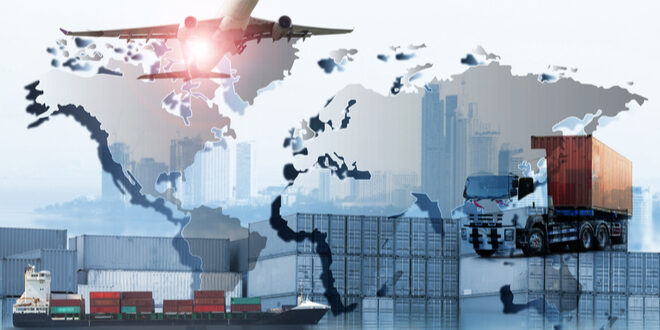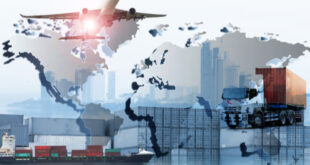By John W. Tulac
In the 1980s, there was real concern whether China would have the ability to feed itself. There was even a very thoughtfully written book entitled “Who Will Feed China?” The reality was China was able to feed itself then and now, although China does import food items, including massive amounts of soy beans that are used for to feed livestock and people, but also for making other products.
China paid a heavy price, however, for its ability to feed itself. It took full advantage of the green revolution, particularly with respect to the use of caustic chemical fertilizers, the effect of which was to create good high yielding crops with the nasty side effect of very high pollution, not only on the land in which it was applied, but also run off into the waters such that much of China’s land today is so polluted is not farmable.
China admits that over 20% of its arable land is not farmable today. The actual number could be closed to double that. Of course, deciding we need to feed ourselves today and we’ll fix the pollution problem tomorrow is perfectly understandable. But the bill is coming due.
This is the first of several columns about the Yin and the Yang of China. China faces incredible risks. In this column we’re going to focus on some of China’s very risky internal economic conditions. Out of those risks comes opportunity, including opportunities for American companies willing to accept the risks of doing business in China today.
China is appalling polluted in many parts of the country. Its farmland is polluted. Its waterways are filthy and it is a growing challenge to provide clean water for drinking and irrigation. The air in cities is hazardous to health, due in major part to the reliance on coal-generated electricity.
Of course we have still to address pollution problems in the United States, but we are doing that. Wee are very effective at abating or remediating many kinds of problems associated with pollution. China needs our expertise, and in fact, China has embraced in some interesting ways the need for a sustainable economy, knowing that, especially with the population size, the need for sustainability is absolute.
The next internal problem is overbuilt infrastructure. One of the reasons China grew so quickly and with such great success and to the size that it has is because it devoted trillions of dollars to infrastructure built primarily by the huge state owned enterprises (SOEs)that were general contractors and the major subcontractors. These companies became became world-class builders.
And build and build and build they did: roads, bridges, ports, airports, buildings for industrial purposes, buildings for retail and commercial, buildings for people to live in and long after China exhausted the need for a lot of this infrastructure.
China today continues to build. Why? Because the state owned enterprises are a major part of the overall economy (too big to fail, anyone?) and employ so many people that it is essential for China to keep them gainfully working. The problem is that while this is good for the employees of the state owned enterprises, it is bad for China because it is using scarce resources, including vast amounts of government money and bank loans, that would be better used elsewhere than to continue to prop up and support these huge state owned enterprises.
One of the purposes of the Belt and Road Initiative is to export the capabilities and expertise of these large general contractors and specialist subcontractors to do work in other parts of the world and take along quite a few Chinese workers in the process. To be fair, these general contractors and specialized subcontractors are among the best in the world in terms of what they do. So they have built major projects, particularly in Asia and the Middle East, and there is a voracious appetite to build more.
In the meantime, overbuilding continues in China but this is economic waste today and becomes an overhanging cost. China has ghost cities, tens of thousands of apartment units in tall buildings, especially in the suburbs of the major cities that are absolutely entirely empty. No one is in there and no one is going to move in there for a long time.
China has hundreds of airports throughout the country that are built to receive airplanes but there are no airplanes to arrive and there are no airplanes to depart. One of the reasons is the military controls all the air space and has resisted opening up the skies to general civil aviation. And as a result, other than the airlines and the cargo carriers, there isn’t much air traffic other than what the military does or the little bit that the military allows.
A wealthy person owning and private jet until very recently was restricted to a hundred mile radius from wherever the plane has been hangered, which means basically they can take it up and fly it around the city and landed again and the military has been slow to release that kind of restriction on private aviation.
So overbuilt infrastructure will remain a serious overhang on China’s economy. It will be a drag on the China economy for a long time, not only in terms of continuing to use resources to build unnecessary infrastructure, but managing built infrastructure that no one is currently using is a related problem.
Over capacity in industry and commerce is the same problem as infrastructure overbuilding only with respect to especially industrial goods, building things, making things for which there is no longer an internal market and the external or export market has been largely saturated.
One of the saddest pictures I ever saw was a private company that made these enormous industrial cylinders for carrying cement. However, there was no more market for these anymore inside or outside of China. So this man who built all this had laid off his entire workplace. There was a picture of him standing in the warehouse surrounded by about 300 of these monstrous mixers and there’s nobody else there. He was closing the doors. He simply walked away. There was nothing left. This is playing out across China in a variety of areas.
There is little or no social floor or support for workers who are not working.
If a worker isn’t able to find other employment soon in the city in which that worker is located, that worker risks being picked up and sent back to the country where there is no work either, but at least one can subsist and feed oneself. No surprise, there is a great deal of worker unrest arising out of the fact that there is a great deal of worker uncertainty.
Success can breed its own issues and problems. The rise in real estate prices initially was very good. Today, however, China has a massive real estate bubble in the major cities. The real estate market is saturated. You would think with all the empty units that this overhang would move against the real estate bubble. It hasn’t yet, because China props up real estate in a variety of artificial ways; they are very afraid of consequences of the bursting real estate bubble, whenever it occurs.
Once the artificial means of life support fails, and a lot of Chinese privately earned hard earned wealth tied up in real estate will evaporate and that will cause significant economic hardship and more unrest, especially among the upper middle class. China has built up a true middle class today, as a result of all the private enterprise. China’s middle class has a fair amount of purchasing power beyond real estate into goods and increasingly into services.
Unfortunately, Chinese people don’t value services very much; if there are a number of bills to pay, the last bill that’s going to be paid is one to a service provider. That’s just built into the culture and it will need to change, as China needs to provide more services to each other over time.
The Chinese stock market is also a bubble, but because China is propping up that stock market in a variety of ways, that bubble is not likely to burst anytime soon unless there’s a serious miscalculation. Many investment gurus remain bullish about investing in Chinese stocks, but a significant failure in any of these other areas could easily trigger a collapse.
There is the potential for stock market collapse, because China is also manipulating its currency and it’s also restricting a movement of capital, particularly restricting movement of capital outside of the country. In trying to manage all of these things the Chinese government has been spending its foreign currency reserves, which are now below 25% of what they had just a fairly short time ago. Again, this is not sustainable. China will not have the ability to manage all of these bubbles and continue to artificially prop things up. If one or more of the bubbles burst, uh, there will be of course a cascading effect and China could spasm in a variety of ways.
These internal issues raise the question: Is China a true crouching tiger, or is that a paper tiger? And if any of these negative things happen and there’s a cascading effect, will China behave more like a cornered rat?

John W. Tulac is an international business attorney practicing in Claremont, adjunct professor of law at University of La Verne College of Law (retired), and Lecturer Emeritus (retired) at Cal Poly Pomona. He is peer recognized as preeminent in international business law and holds the highest ratings for competence and ethics from the Martindale Hubbell National Law Directory. http://www.johntulac.com
 IE Business Daily Business news for the Inland Empire.
IE Business Daily Business news for the Inland Empire.


